How to Do a Reverse ASIN Search and Why It’s Important

Selling on Amazon can be a headache, especially if it’s your first time. One of those strategies you can use to gain a competitive advantage is the reverse ASIN search— a technique that helps sellers gain valuable insights into optimizing their listings and having a bird’s eye view of their competitors’ strategies. For simplicity, think of it as doing competitor research.
In this article, we’ll discuss what a reverse ASIN search is, why it’s useful for sellers, and how to successfully perform it.
What Is an ASIN?
Amazon Standard Identification Number (ASIN), or product ID, is a unique ten-digit identifier given to every product listed on Amazon's platform. Once you post a listing, Amazon will immediately provide an ASIN which can be found either on your product or Inventory page on Amazon Seller Central.
Adding an ASIN to each product helps Amazon manage inventory and process orders efficiently. For customers, the ASIN can help them find the exact product they’ve been looking for which can be found in the product details (see example below).
For example, the ASIN of our Step by Step Guide to Launching a #1 Best Selling Product on Amazon book is 1729395473.
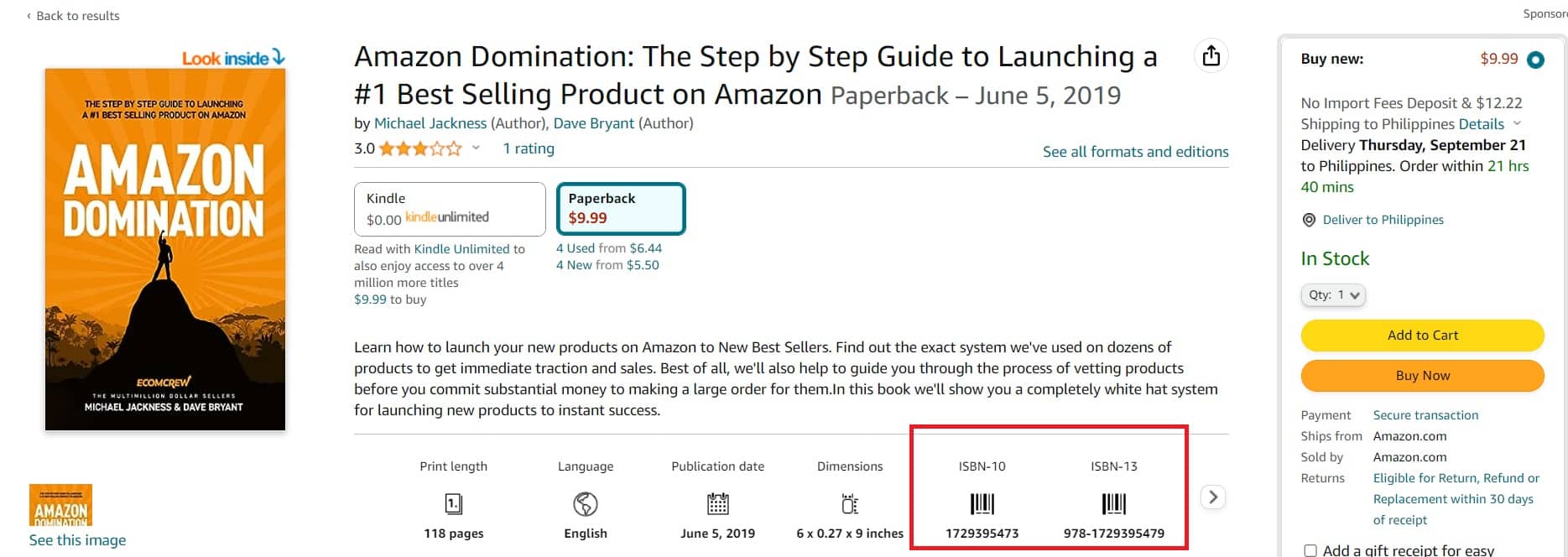
If you’re using a desktop, you can also find a product’s ASIN by checking the top of the search page’s URL.
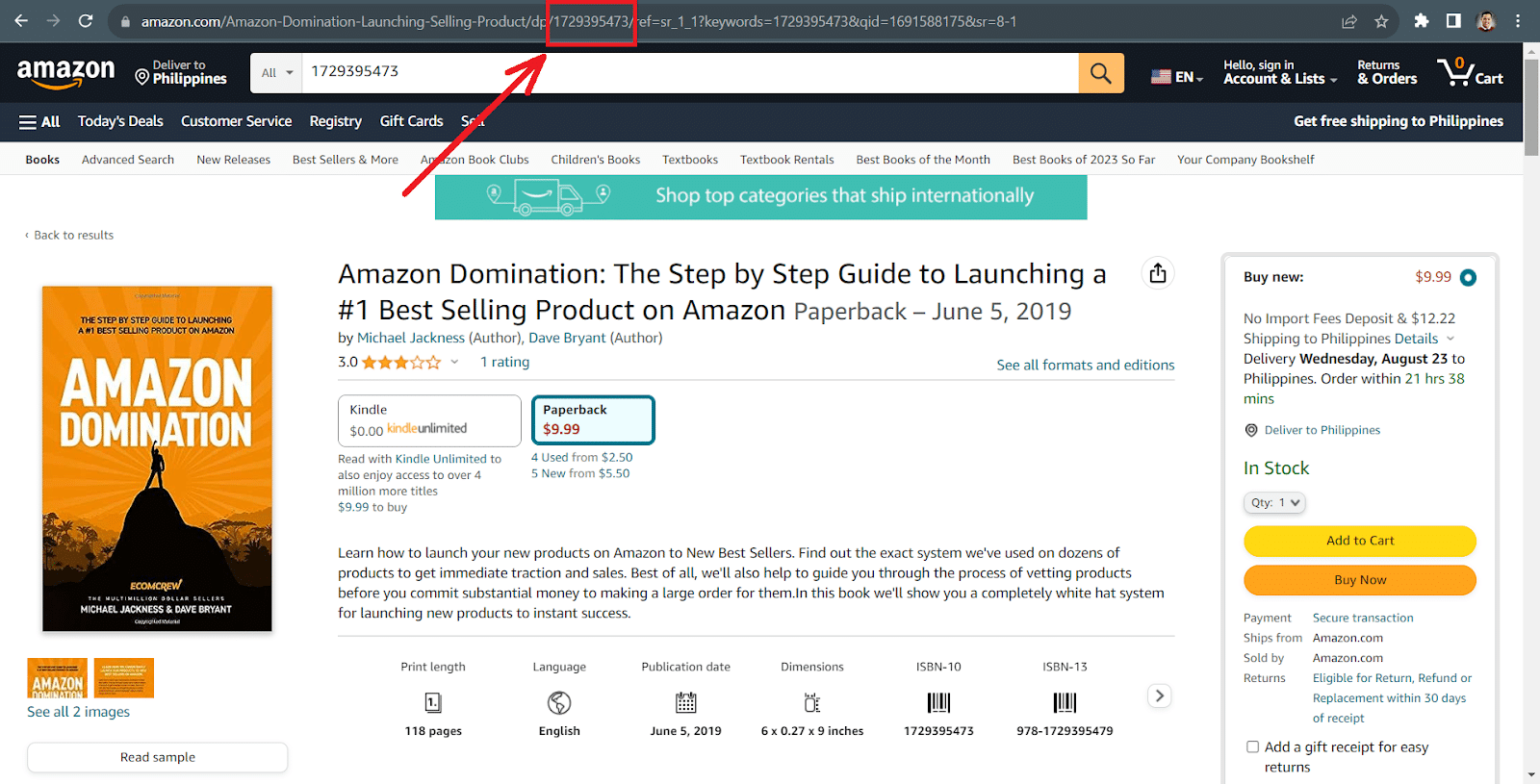
What Is a Reverse ASIN Search?
Also coined as Amazon reverse ASIN lookup, a reverse ASIN search allows you to find top-ranking keywords for any listing on Amazon. This allows sellers to optimize their listing and discover which keywords their competitors are using to drive sales on Amazon. Some tools will even give you insight into your customers’ purchasing behavior.
No matter how affordable or high-quality your products claim to be, it’ll be no use if none of your potential customers get to see them. Of course, you can run multiple online marketing campaigns, but this can put a huge dent in your budget and requires years of practice and experimentation to get right.
The first option sellers do to get their feet wet with reverse ASIN is by using Amazon’s Brand Analytics tool. However, since this will yield limited results, some sellers would much rather use third party software like Helium 10 Cerebro—an all-in-one software suite for Amazon sellers to help you get the most traffic out of every keyword to supercharge your listing.
There are also free and paid versions on the web, but when you’re considering your options, make sure the reverse ASIN tool can provide the following:
-
-
- Competitor analysis. Aside from spying on your competitors, the software should have information on a product’s title, descriptions, images, reviews, and ratings.
- Competitive benchmarking. This helps sellers identify areas for improvement and develop effective strategies.
- Customer support. It always helps to have someone readily available to answer all of your queries.
- Data export and reporting. The ability to export data and generate comprehensive reports is valuable for sellers who want to analyze the information in more detail or share it with their team.
- Filtering and sorting options. This allows users to focus on specific metrics, such as high-performing keywords or top-selling products.
- Historical data. This is crucial for spotting trends and understanding market dynamics.
- Keyword research. Regarded as the most important aspect of a reverse ASIN tool, it should have a list of relevant keywords associated with the ASIN, along with data on search volume, competition, and trend analysis.
- Real-time data updates. Having timely updates can be key to keeping up with the unpredictable nature of Amazon.
- Sales and performance metrics. An ideal reverse ASIN tool should provide data on the target ASIN's sales performance, including sales volume, revenue estimates, and sales trends.
- User-friendly interface. The tool should be easy to navigate, ensuring that users can quickly access and interpret the data.
-
Recommended Listening: All About Marketing— from Push Notifications to Email Marketing
How Do You Perform a Reverse ASIN Search?
The more common tools in conducting a reverse ASIN search are Jungle Scout, Helium 10, and Seller App. Luckily, all three platforms use a similar set of steps when performing the search.
First, we’ll show you how it’s done using Helium 10.
How to Do a Reverse ASIN Using Helium 10
1. Input the ASIN of Your Competitor Into the Search Bar
Since we mentioned earlier the different ways you can find the ASIN of any given product, this step should be fairly easy. Once you’ve reached the Dashboard, go to the tab labeled Tools at the upper left hand side, then go to Keyword Research and click on Cerebro.
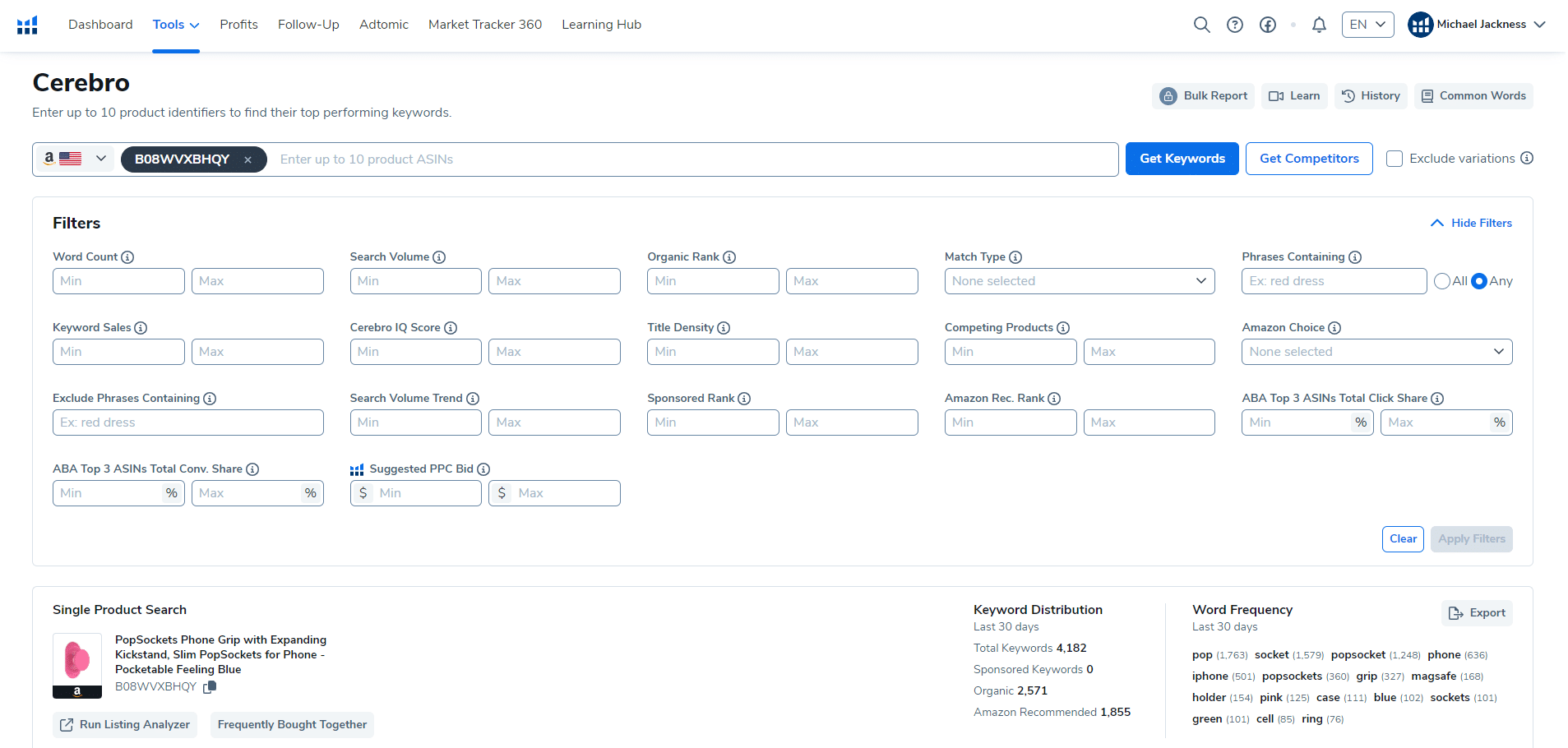
Once you find the product ASIN you want to get information about, input the ASIN and filter the search to show either “organic” or “sponsored” search results.
2. Review the Results and Analyze Competitor Data
Once you click search, Cerebro will then generate a report with various data, including keyword rankings, keyword categories, sales rank, PPC bids, and more.
Once the report has been generated, use this information to analyze your competitors' products and look for strengths and weaknesses in their listings, identify opportunities for improvement, and understand market trends.
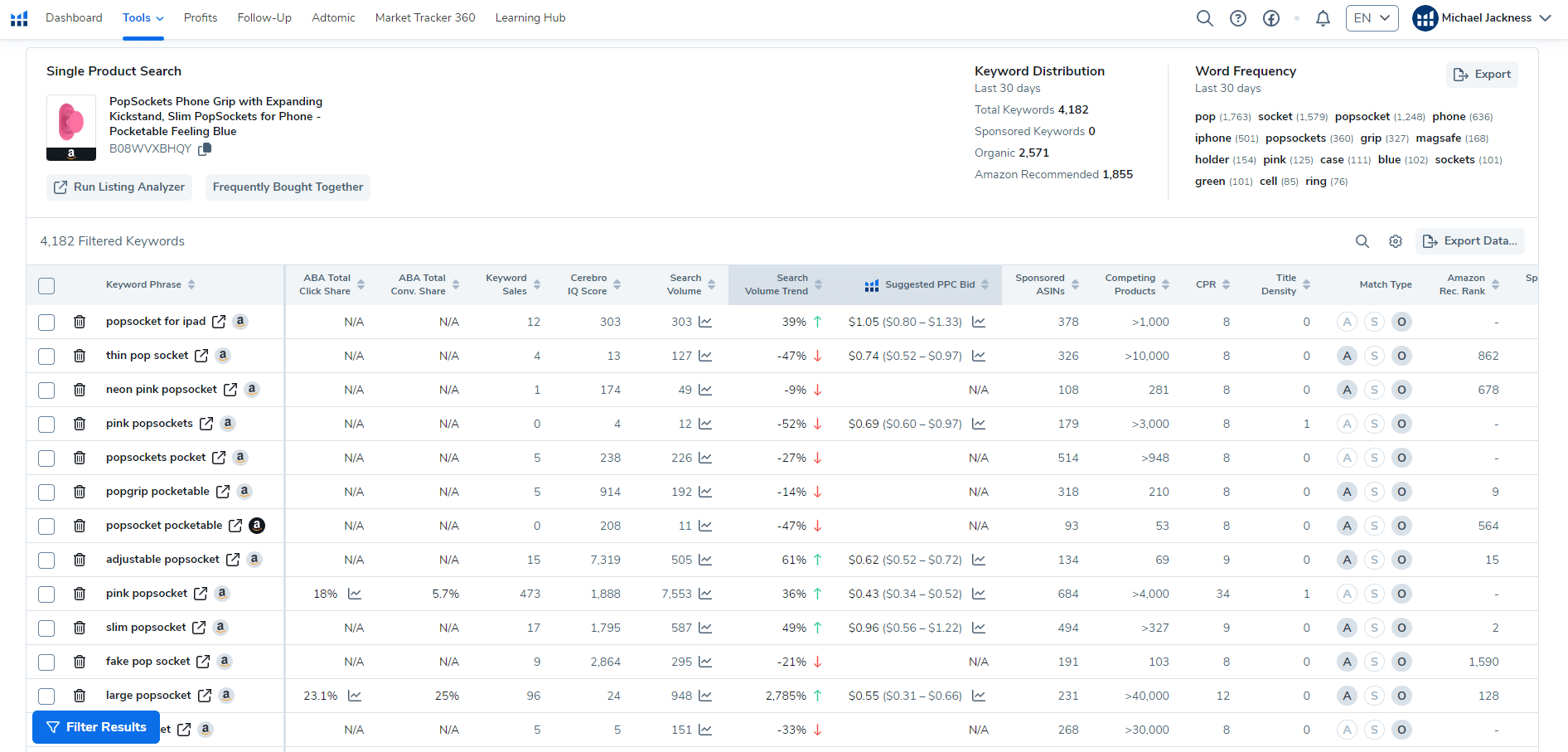
3. Gather Keyword Insights
Now that you’ve gathered the right keywords, it’s time to put them into action. This will help you create keyword-filled descriptions for your products and optimize your listings.
You can also do a reverse ASIN search on the same product from multiple competitors to help you easily identify high search, low competition keywords.
Remember that the specific features and functionalities of the tools may vary, so it's essential to familiarize yourself with the tool's interface and capabilities to make the most out of your reverse ASIN search.
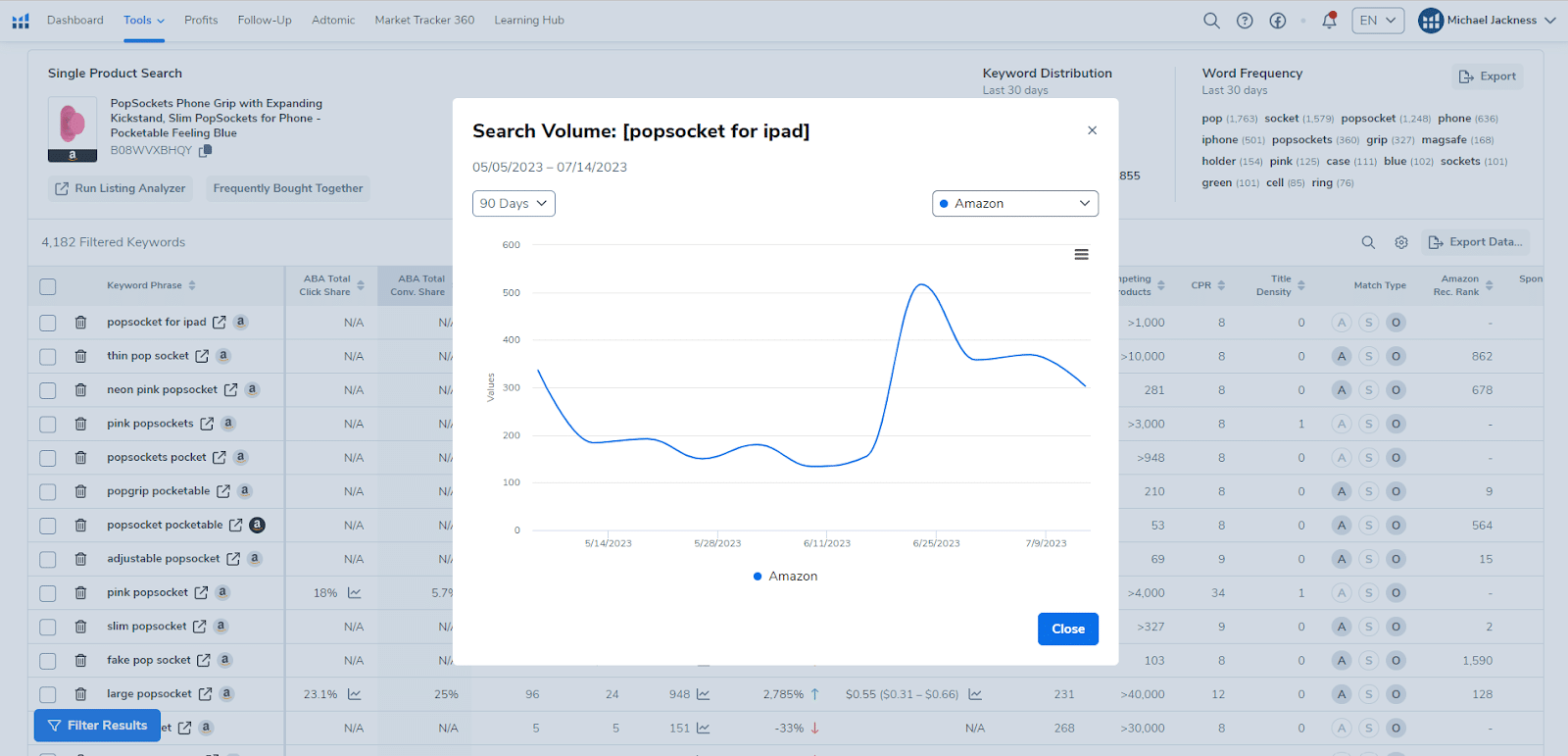
How to Do a Reverse ASIN Using Jungle Scout
1. Input the product’s ASIN into the search bar
Once you’ve made an account on Jungle Scout, head over to the dashboard on the website. From there, navigate to the Features tab and click on Keyword Scout. Input the ASIN of the product you want to analyze into the search bar and hit enter.
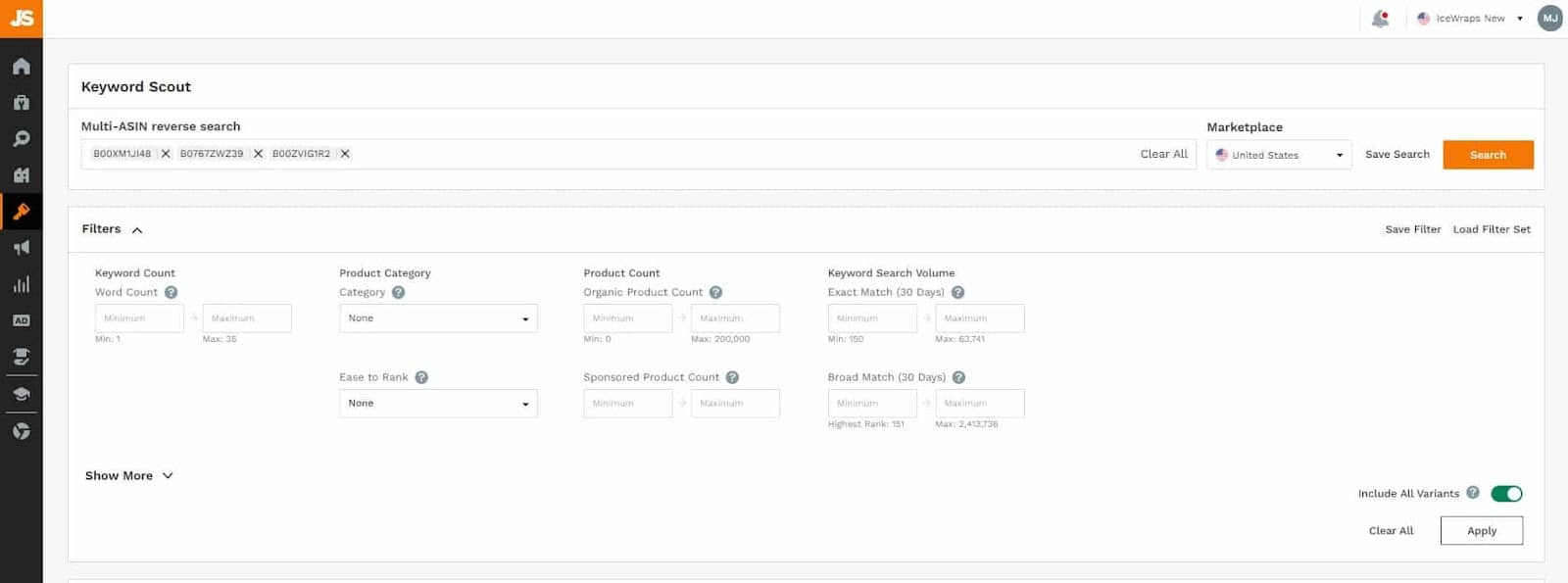
2. Collect your keywords
After hitting enter, Jungle Scout will pull up keywords associated with the product you entered that you can use to gain insights towards your competitors’ performance so you could then come up with your own strategies.
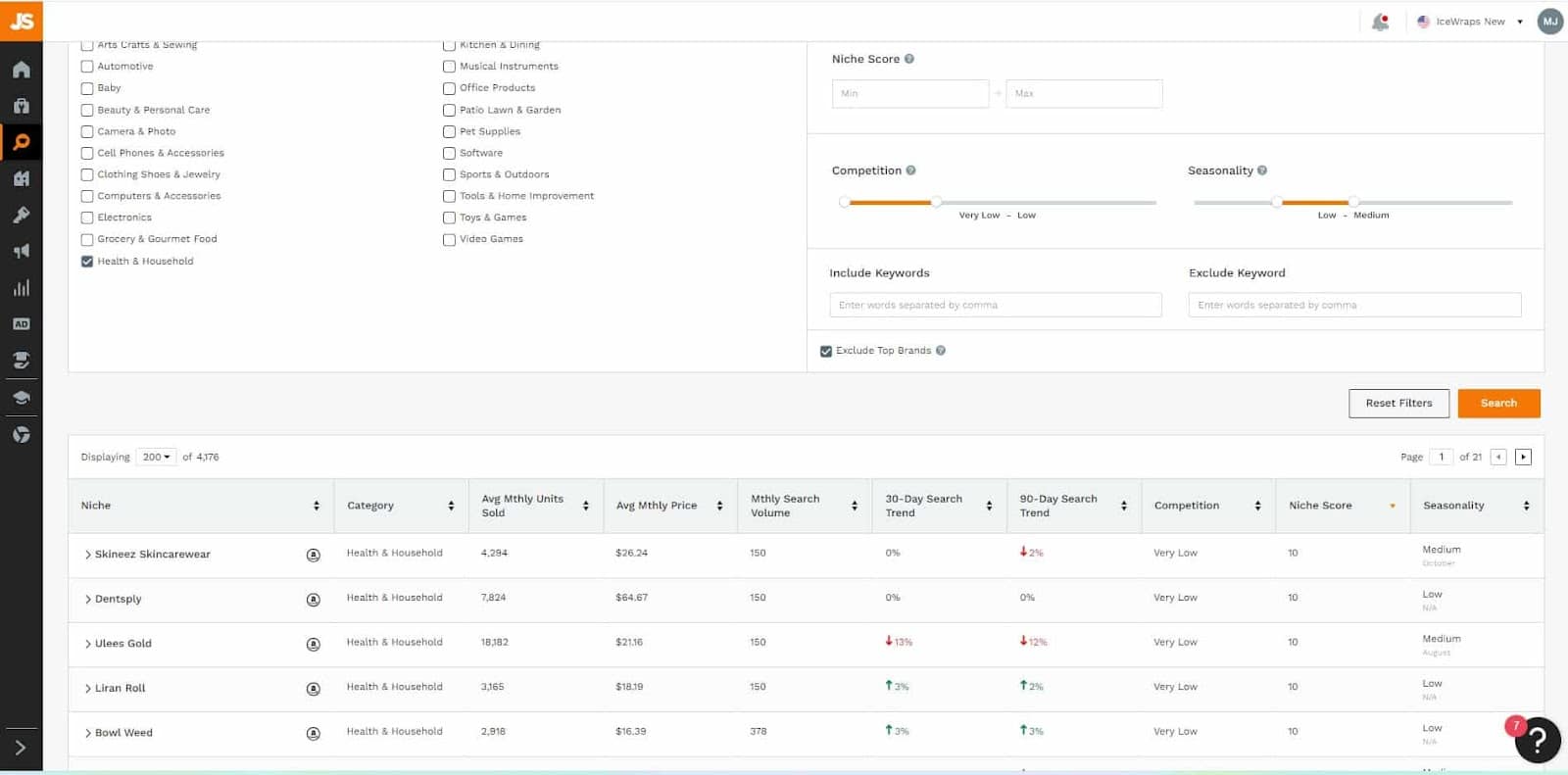
How to Do a Reverse ASIN Using SellerApp
-
Enter ASIN into search bar
Using SellerApp as a reverse ASIN tool is fairly easy to use. Once you’ve logged in your account, click on the Keyword Tool option. This will then show two options, Keyword Research and Reverse ASIN. For this topic you’ll want to click on the Reverse ASIN option.
From there, it’s similar to Jungle Scout and Helium 10. Input the ASIN into the search box and wait for SellerApp to do its magic.
2. Check and analyze results.
Once the report has been generated, you will see different data such as relevance score, monthly search volume, CPC, and conversion rate. Furthermore, when you click on some of the high ranking keywords on a search results page, it will analyze the keywords depending on the metrics that you set.
Why Is a Reverse ASIN Search Useful for Sellers?

As a seller, one of the main goals is to have customers view your product before your competitors. Instead of blindly adding keywords, use data backed research to know what specific keywords work best.
By performing a reverse ASIN search, you’ll be able to gather valuable information on which keywords your competitors are targeting in their SEO strategy while also comparing your own results.
That being said, a reverse ASIN search can also help you identify trends with your customers.
This will help you stay one step ahead in planning your future campaigns, ultimately cutting down your costs and the amount of time spent experimenting with different scenarios.
Here are some of the main reasons why a reverse ASIN search will be useful to sellers:
-
-
- Amazon SEO
- Competitor research
- Keyword extraction
- Identify market trends
- Product research
- Listing optimization
- Identify best selling products
-
Overall, this technique is a great way to provide sellers with crucial data and insights that can help them make informed decisions about their products, marketing strategies, and overall growth on the platform.
Final Thoughts
The reverse ASIN Search is a powerful tool that provides Amazon sellers with information about their competitors and the dynamics of their niche. It provides sellers with valuable insights into their competitors' performance, keyword strategies, and pricing tactics.
With the help of multiple tools, you can fine-tune your marketing efforts by optimizing your product listings to help you compete in a highly competitive Amazon marketplace.
Have you tried a reverse ASIN search to help you increase your sales on Amazon? If so, how did it go? Let us know in the comments below.



